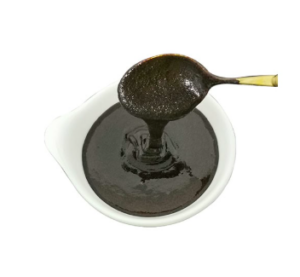Low sodium soy sauce, a healthier alternative to traditional soy sauce, has gained popularity among health-conscious consumers. It offers a similar rich flavor profile with significantly less salt, making it ideal for those who need to reduce their sodium intake without compromising on taste.
Table of Contents
ToggleThe Production Process of Low Sodium Soy Sauce
To understand how low sodium soy sauce is made, it is essential to start with its base ingredients. Soy sauce production begins with the fermentation of soybeans, wheat, salt, and a fermentation agent such as yeast or mold. The standard recipe for soy sauce typically includes around 14-16% salt content. However, low sodium soy sauce is produced by reducing the amount of salt used during fermentation.
 1. Fermentation Process
1. Fermentation Process
The fermentation process is a crucial step in developing the distinct flavor of soy sauce. During fermentation, enzymes break down proteins and starches in the soybeans and wheat into amino acids and simple sugars, creating the umami-rich profile. In low sodium soy sauce, the reduction of salt is balanced by increasing the fermentation time and using specific strains of bacteria or molds that enhance flavor without the need for as much salt.
2. Salt Reduction Techniques
To make low sodium soy sauce, the production process includes modifying the traditional salt levels. Usually, this involves using a 30-40% reduction in salt compared to regular soy sauce. Some manufacturers achieve this by diluting the soy sauce with water or by using alternative sources of umami, such as hydrolyzed vegetable protein or mushrooms, to make up for the reduced salt content. This ensures the flavor profile remains robust and satisfying while lowering the sodium level.
The Role of Umami in Low Sodium Soy Sauce
While sodium is a key component in traditional soy sauce, it is the umami flavor that gives soy sauce its characteristic savory taste. In low sodium soy sauce, the challenge is to maintain that umami flavor without relying heavily on salt. Manufacturers often turn to fermentation techniques that increase the concentration of naturally occurring glutamates, a compound responsible for the umami flavor. Additionally, the use of alternative ingredients such as fermented rice or even fish-based ingredients can help enhance the depth of flavor.
1. Enhancing Umami with Alternative Ingredients
To compensate for the reduced sodium, some low sodium soy sauces use alternative sources of glutamate, like seaweed or certain vegetables. These ingredients naturally contain high levels of umami compounds, which can be used to improve the flavor without adding excess salt.
2. The Impact of Fermentation Time
Extended fermentation plays an essential role in intensifying the flavors in low sodium soy sauce. The longer the fermentation period, the more the proteins in the soybeans and wheat break down into amino acids, which contribute to the complex umami taste. This is why many low sodium soy sauces are aged for a longer period compared to their regular counterparts.
Nutritional Benefits of Low Sodium Soy Sauce
One of the main reasons people choose low sodium soy sauce is its reduced sodium content, which is beneficial for those monitoring their blood pressure or reducing their risk of heart disease. Low sodium soy sauce typically contains about 500-700 mg of sodium per tablespoon, compared to the 900-1000 mg found in regular soy sauce. This reduction can make a significant difference for individuals who use soy sauce regularly.
Conclusion
In conclusion, low sodium soy sauce is made through a careful balance of fermentation, salt reduction, and flavor enhancement techniques. By reducing the sodium content and utilizing longer fermentation times and alternative ingredients, manufacturers can create a condiment that delivers the same satisfying umami flavor while supporting a healthier diet. The combination of these factors makes low sodium soy sauce a versatile and flavorful choice for anyone looking to cut back on sodium intake without sacrificing taste.
0

